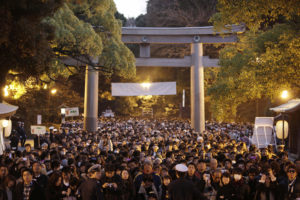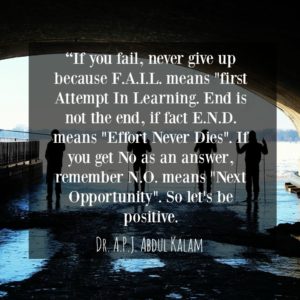By Nolan Lee
Monthly Archives: November 2016
Bullying Prevention
What is bullying?
Bullying is the act of intimidating someone through influence or through force.
Can bullying happen to anyone?
Yes, bullying does occur everywhere and to anyone of any backgrounds. Bullying doesn’t have to happen person to person. Bullying can occur through online, social media apps, letters, and more.
What can I do if I or a friend is experiencing bullying?
It depends on the severity of the bullying to know what you can do, but here are some tips on how you can handle the situation:
- Reach out for help. Whether it is your parents, a legal guardian, a counselor, or your close friend, make sure to let them know that you are being bullied. You don’t need to feel helpless or ashamed of anything. There are people who will support you to help you solve and cope with your situation.
- Try to avoid confrontation. If possible, avoid getting into physical fights or argument with bullies. It will not help stop the bullying, it is better to ignore and walk away when you can.
- Use {free} services to address about bullying. You can call or email a hotline or a online tool to help you talk about your bullying experience. They will keep you anonymous and your information confidential. This link is a government website that gives your free resources.
- Don’t watch, stand up. If you see another person being bullied, the best thing you can do is grab a adult nearby to stop it. If you feel that the situation can be handled by you stepping in, you can try to deescalate the situation by using methods such as:
- Pulling the victim away to a place far from the bully
- Show up and ask them where they have been (acting as a friend to neutralize the negative space)
- If you have someone nearby or ask a stranger to aid the victim to escape the situation
- Call 911 if you feel that the situation is dangerous
From the Act to Change website:
- About 1 out of 5 students report being bullied during the school year
- Bullying occurs once every 7 minutes 5 to 6 times more likely
- Bullied students were 5 to 6 times more likely to miss school than those who were not bullied 50% of AA students
- Half of Asian American students in New York City public schools reported biased based harassment
Public Health: Preventing Suicide
Suicide is a serious concern in the US and it is becoming more common in modern times. The feelings of being stressed, going through depression, or being pressured from outside forces can take a toll on people. So what can we as a society and individuals do to prevent suicide from occurring?
- Change the negative perception of those with mental illnesses, disorders, and substance abuse. Often times, people are too embarrassed or ashamed to get help and it could be that they don’t want their problems to be known or allow it to bother other people. “But talking, being open, and making connections with mental health services can make the difference between life and death. Research has uncovered warning signs for suicide. Learn warning signs from SAMHSA’s Suicide Prevention Resource Center
 and an easy-to-remember warning signs mnemonic from American Association of Suicidology.
and an easy-to-remember warning signs mnemonic from American Association of Suicidology.  ” – http://www.hhs.gov/
” – http://www.hhs.gov/ - Use public services that are available and always confidential. Rely on your local clinic or go see a therapist to help you or your friend out. Talking about one’s thoughts and feelings can help them organize themselves in terms of how to deal with difficult situations. It’s not easy to open up about sensitive topics but allowing someone in to help and guide them is a step towards a positive direction.
- Acknowledge that suicide is preventable. Let’s talk honestly about this difficult issue, use broad collaborative approaches to address the problem, and do all we can to learn more about how to prevent suicide. Help get the message out.
If you or someone you know needs help, contact the National Suicide Prevention Lifeline
 (1-800-273-TALK/8255). Last year the Lifeline connected 1.5 million callers with counselors in their local area. Through a network of more than 160 community crisis centers, the Lifeline also offers specialized support to veterans, Spanish speakers and online users.
(1-800-273-TALK/8255). Last year the Lifeline connected 1.5 million callers with counselors in their local area. Through a network of more than 160 community crisis centers, the Lifeline also offers specialized support to veterans, Spanish speakers and online users.
Facts:
- Each year there are more than 40,000 suicides in the US – an average of about 117 every day.
- Rates of suicide have increased by 28 percent since 2000, and it is the 10th leading cause of death in the United States.
- Every year some 1.1 million adults attempt suicide and about 470,000 people are treated in U.S. emergency departments for nonfatal, self-inflicted injuries.
Statistics and other information is link here!
Distracted Driving
What is distracted driving?
While driving, the driver is engaged in another activity that hinders their ability to drive a moving vehicle safely.
What can you do?
- Pay attention to your surroundings.
- Follow basic driving regulations and speeding limits.
- As passengers, alert distracted drivers of oncoming traffic and inform them
A Message from the Minnesota Department of Public Safety:
Distracted Driving, a Deadly Choice for TeensTwenty percent of fatalities involving teen drivers in Minnesota are distraction-related.Distracted-related teen driving fatalities and injuries
- Cell phones — Put the phone down, turn it off or place it out of reach.
- Speak Up – Offer to be the driver’s designated texter.
- Music and other controls — Pre-program radio stations and arrange music in an easy-to-access spot. Adjust mirrors and ventilation before traveling.
- Navigation — Map out the destination and enter the GPS route in advance.
- Eating and drinking — Avoid messy foods and secure drinks.
- Children — Teach children the importance of good behavior in a vehicle and model proper driving behavior.
- Passengers — Speak up to stop drivers from distracted driving behavior and offer to help with anything that takes the driver’s attention off the road.
This Month in Japan | November
November in Japan is a popular time for people to visit parks, shrines, and gardens to witness the changing colors of the leaves. Also, it is a great time to travel to Japan due to the mild and cool weather. There are various events going on in Japan in which people can participate and have a fun time.
Some events being held in Japan during this month is:

Crowds wait their turn to offer prayers at the Meiji Shrine in Tokyo, on the second day of the new year Saturday, Jan. 2, 2010. (AP Photo/Greg Baker)
- Meiji Shrine Autumn Festival is held at Meiji Shrine in the distrit of Harajuku from Nov 1-3, 2016. It includes a variety of art and sport performances.
- Kaki Season – “Kaki are an orange Japanese fruit that come into season in November. They are extremely bitter before they ripen. When ripe, they are sweet with a unique citrus-like taste. Kaki and kaki flavored desserts are widely available in Japan in late autumn.” – http://www.japan-talk.com
- Sumo Kyushu Basho is a sumo wrestling tournament that is being held from Nov 13-27, 2016. Click here for more info on the year schedule.
- Viewing of autumn leaves in public spaces, and a popular time for people to visit cities with wonderful views such as Kyoto, Sapporo, Tokyo, and more.
- Shrine, temples, and castle visits are also popular during this time of the year, usually from the fall into the winter and January of the next year for ceremonies, holidays, and receiving/giving blessings.








